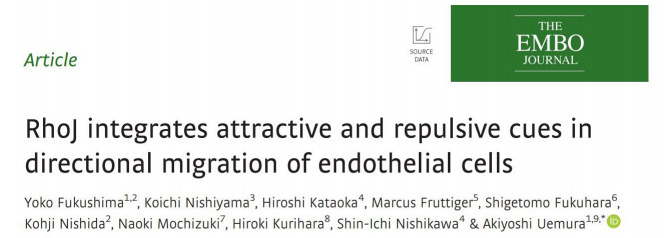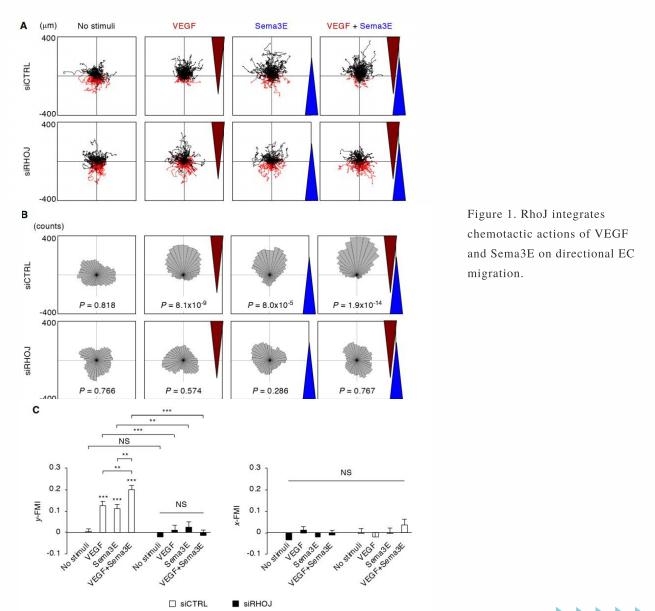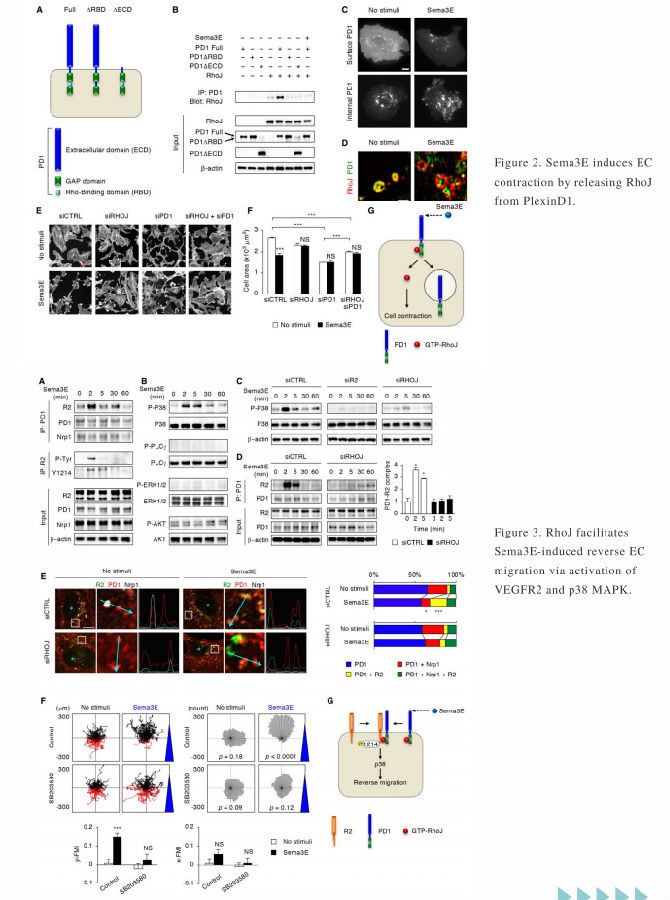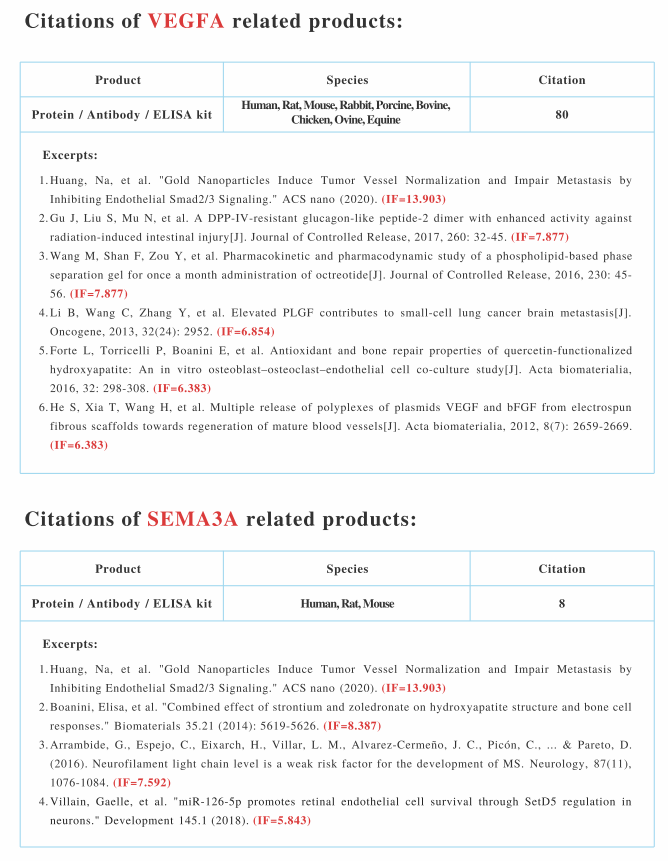RhoJ integrates attractive and repulsive cues in directional migration of endothelial cells

On April 29, 2020, professor Akiyoshi Uemura from Kobe University Graduate School of Medicine published a paper titled RhoJ integrates attractive and repulsive cues in directional migration of endothelial cells on EMBO JOURNAL.
The ELISA kit (Sema3E, SEL920Mu) of Cloud-Clone brand was chosed to determine the concentation of Sema3E in this article, we are so proud for supporting the reaserchers.


During angiogenesis, VEGF acts as an attractive cue for endothelial cells (ECs), while Sema3E mediates repulsive cues. Here, we show that the small GTPase RhoJ integrates these opposing signals in directional EC migration. In the GTP-bound state, RhoJ interacts with the cytoplasmic domain of PlexinD1. Upon Sema3E stimulation, RhoJ released from PlexinD1 induces cell contraction. PlexinD1-bound RhoJ further facilitates Sema3E-induced PlexinD1-VEGFR2 association, VEGFR2 transphosphorylation at Y1214, and p38 MAPK activation, leading to reverse EC migration. Upon VEGF stimulation, RhoJ is required for the formation of the holoreceptor complex comprising VEGFR2, PlexinD1, and neuropilin-1, thereby preventing degradation of internalized VEGFR2, prolonging downstream signal transductions via PLCγ, Erk, and Akt, and promoting forward EC migration. After conversion to the GDP-bound state, RhoJ shifts from PlexinD1 to VEGFR2, which then terminates the VEGFR2 signals. RhoJ deficiency in ECs efficiently suppressed aberrant angiogenesis in ischemic retina. These findings suggest that distinct Rho GTPases may act as context-dependent integrators of chemotactic cues in directional cell migration and may serve as candidate therapeutic targets to manipulate cell motility in disease or tissue regeneration.



